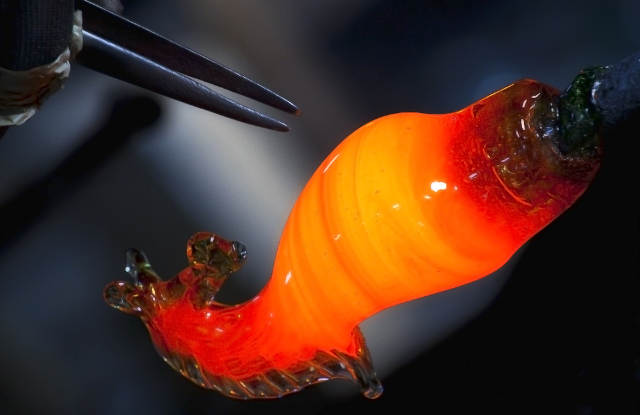Scientists from Kyoto University and the University of Bristol have harnessed information theory and computer simulation to solve the long-running mystery of whether glass ever stops flowing.

When a hot glass is blown, its liquid nature is clear to see. After the glass cools down to room temperature, it becomes solid, and can be made into vessels, window panes, and other products. During the solidification process, molecules organize into a crystalline structure.
However, when glass is observed under a microscope, it looks as if the glass continues to flow, although very slowly, and never fully crystallizes. In other words, the material appears solid to an observer, but looks fluid under the microscope. This mystery dates back many years, and even modern supercomputers have not been able to validate whether glass ever stops flowing, or has a true solid structure.
Information theory provided us with the mathematical tools to detect and quantify the movements of atoms, which turned out to move as if they were in communication with each other.
Dr Karoline Wiessner
Researchers, headed by Dr Karoline Wiessner and Dr Paddy Royall, collaborated with Professor Ryoichi Yamamoto from the Kyoto University to address the puzzling question of what happens at low temperature, and whether the entire material actually becomes solid.
The team observed that the material has solid-like regions, whose size increases over time and atoms in these regions assemble into geometrical shapes like icosahedra. In 1952, these icosahedral configurations were predicted by Sir Charles Frank at the HH Wills Physics Laboratory, University of Bristol.
We found that the size of the solid regions of icosahedra would grow until eventually there would be no more liquid regions and so the glass should be a true solid
Dr Paddy Royal
The study has been published in Nature Communications, and was conducted as part of the Bristol Centre for Complexity Sciences and Bristol-Kyoto agreement.
Sources and further reading
Is glass a true solid - Bristol University